CONTENTS
Introduction
1 A basic installation design for domestic LP Turbines
2 Eliminating extreme poverty within ten years
2.1 The problem and the opportunity
2.2 The cooling based positive feedback loop
2.3 AI data centres in warm climates
3 Case Study: Pakistan
3.1 Private homes in Karachi
3.2 Industry in Karachi
3.3 The power based positive feedback loop
3.4 Water problems in Karachi
4 The horticulture based positive feedback loop
5 Rolling back the deserts
6 Delivering states that work for the people
6.1 Collecting energy taxes
6.2 Be Patriotic - Fly the Turbine!
6.3 Reducing corruption
6.4 Reducing goods theft
7 Two more positive feedback loops
7.1 The tropical disease feedback loop
7.2 The birth-rate feedback loop
8 Reducing the economic refugee problem
9 Africa
10 African case study: the Makoko floating slum
11 LP Turbines and Black Lives Matter
12 A new cryptocurrency to work in harmony with LP Turbines to fight inequality
Introduction
LP Turbines are a new source of renewable energy. As with solar panels and wind turbines, there are no fuel costs involved. But they are superior to these other forms of renewable energy because they can run anywhere on the globe, day and night without requiring daylight or wind. Their purchase and installation costs should also be lower than for solar or wind power. As a bonus, cooling humid air produces useful quantities of freshwater condensation in hot climates.
Once they have been paid for, their only running costs are annual service charges.
Better still, from the day they are installed, their owners can earn an income by running them at full output 24 hours/day and selling their surplus electricity.
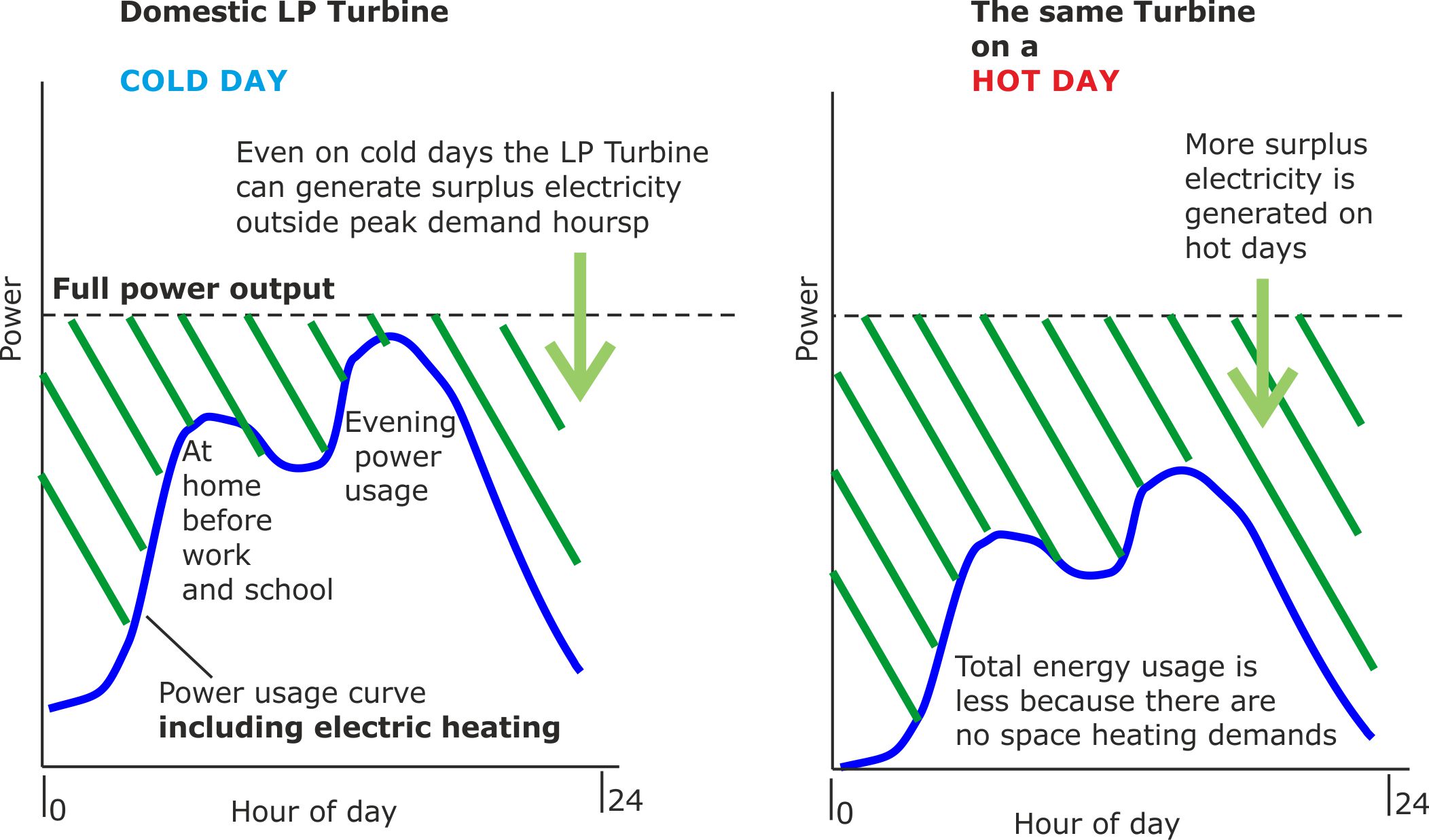
Figure 1. By running at maximum power output 24 hours/day in mild climates, domestic LP Turbines can generate some surplus electricity in winter, but more in summer.
Owners of LP Turbines in hot climates will find themselves in the best position to earn extra income because by using LP Turbines primarily for air cooling or fresh water production, they will generate the largest electricity surpluses of all.
1 A basic installation design for domestic LP Turbines
Climate change is making the weather unpredictable. So buildings across the globe need to have resilience against hot and cold weather built in. The following diagrams illustrate a climate resilient LP Turbine system.
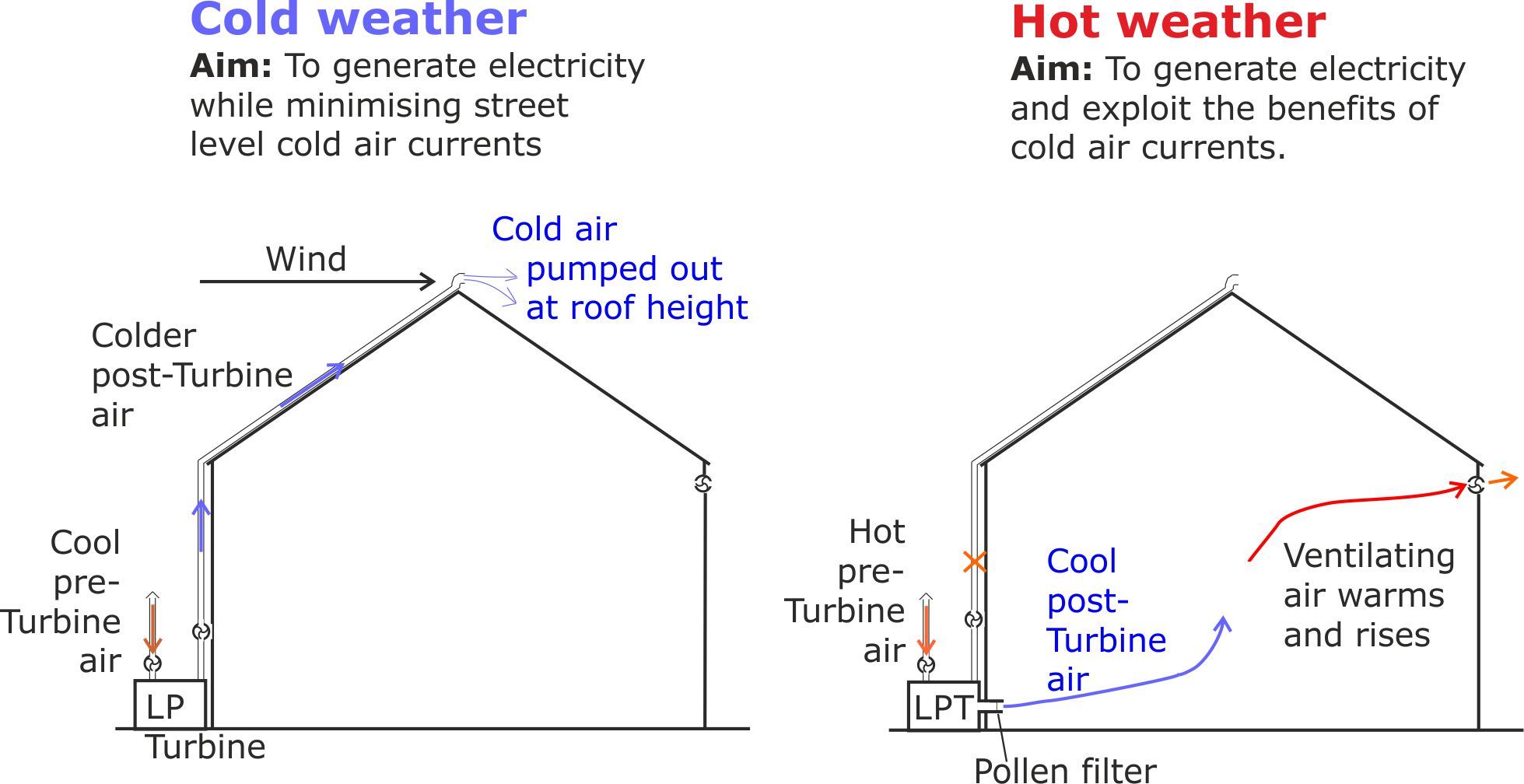
Figure 2. LP Turbines can keep a building cool by constantly pumping in fresh cool air to replace the stale warm air.
The following diagram shows the key features of a domestic LP Turbine unit.
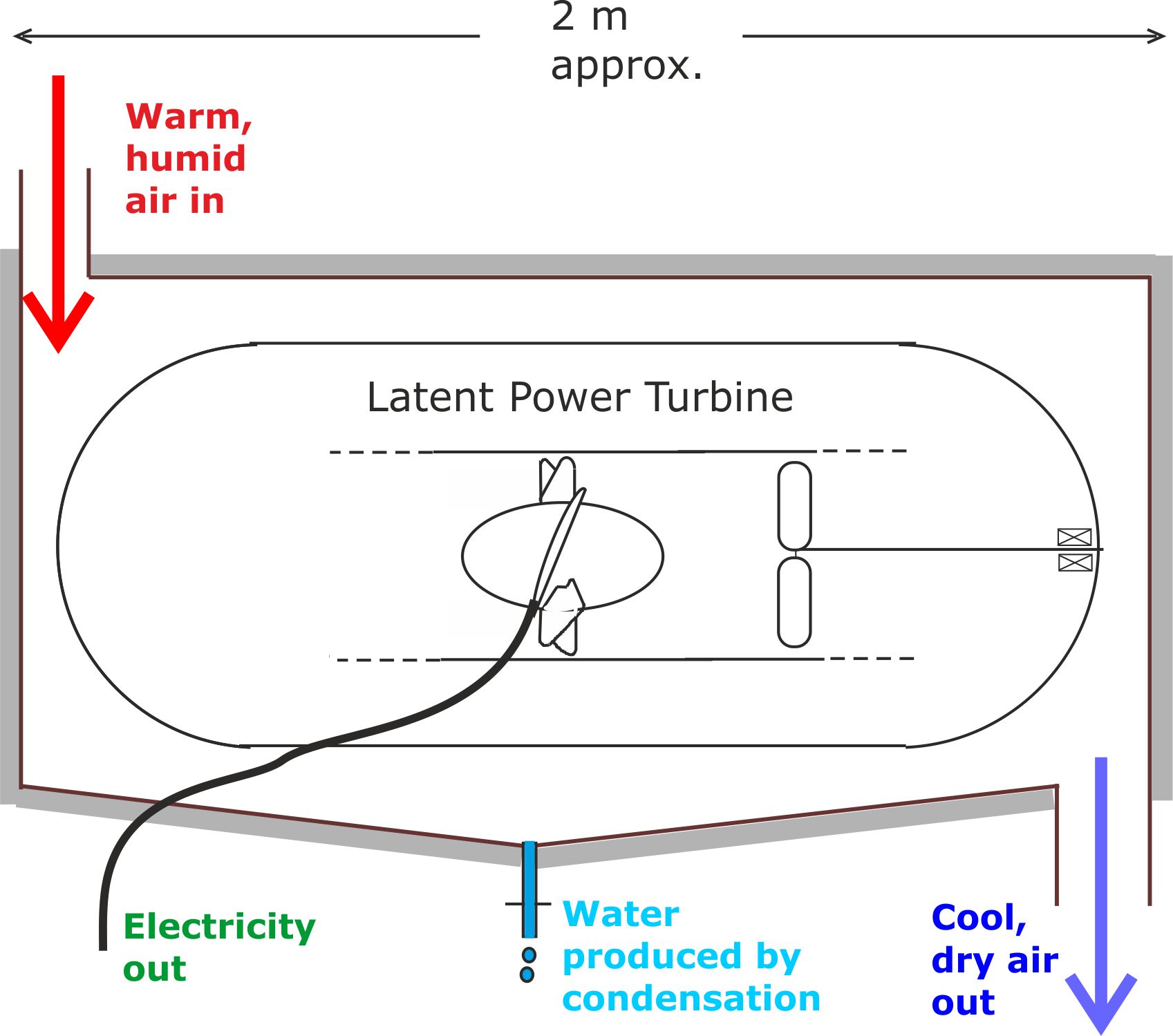
Figure 3. To avoid the build-up of ice on cold days, different sections of the LP Turbine casing can be sequentially defrosted. Electric powered defrosting only consumes a small fraction of the electricity generated. Alternatively, the LP Turbine casing may be positively charged to discourage Van der Waals bonding of ice crystals.
The diagram below illustrates key differences between a conventional air conditioning system and LP Turbine based air cooling.
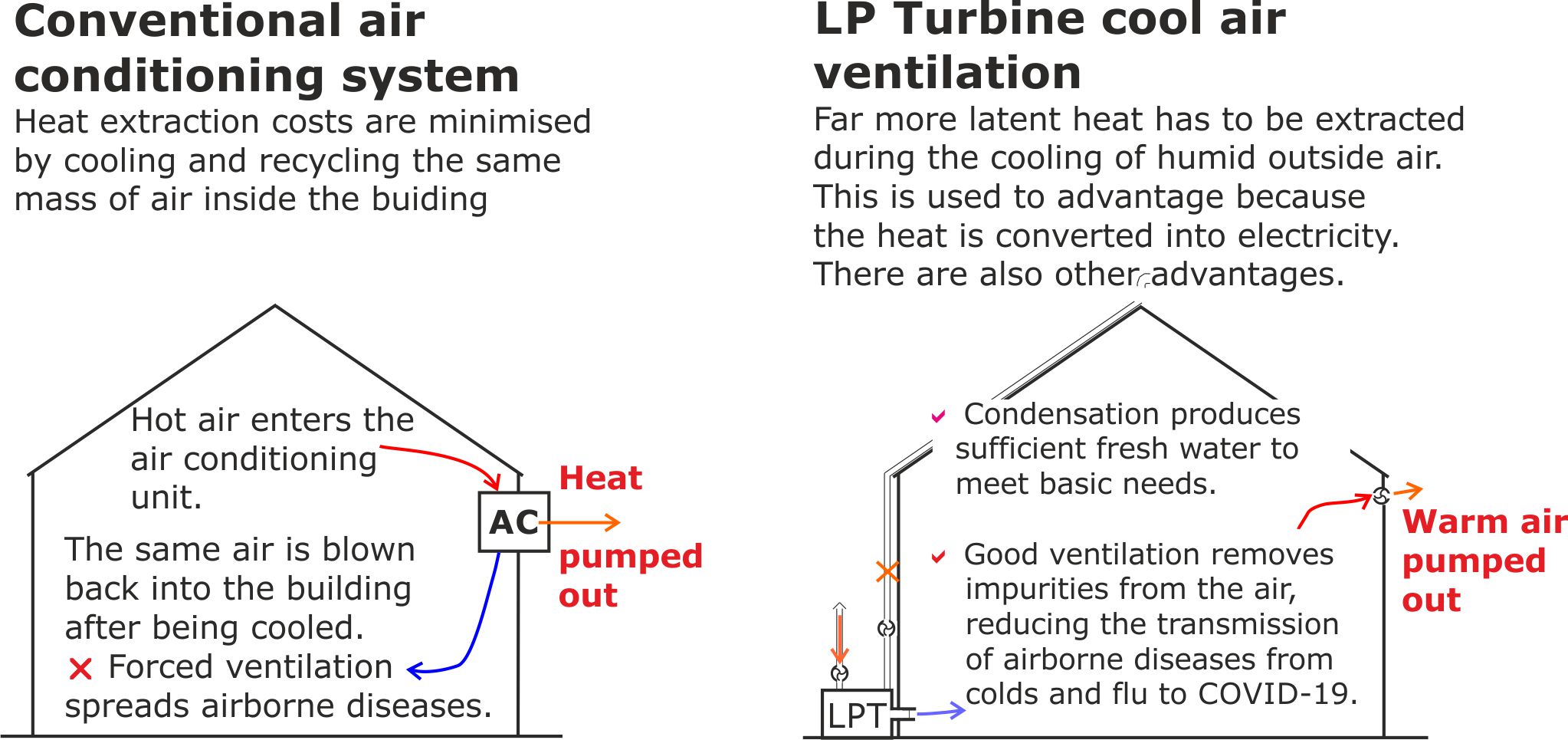
Figure 4. The LP Turbine approach converts a hot climate problem into a benefit because the hotter and more humid the atmospheric air is, the more the output of water and electricity increases.
Approximately 50 litres of fresh water are produced if an LP Turbine is used to cool a 20 Sq metres room for 24 hours.
According to the WHO, 50 litres is sufficient to meet the minimum daily requirements of two adults in a hot climate. [https://www.who.int/water_sanitation_health/emergencies/qa/emergencies_qa5/en/
Cool air ventilation is also better for our health because regularly replacing the air we have breathed is better than conditioning and recycling it. The Centres for Disease Control and Prevention have reported a link between conventional air conditioning and the early spread of COVID-19 in Wuhan. They recommend improved ventilation to reduce future transmissions. [https://wwwnc.cdc.gov/eid/article/26/7/20-0764_article ]
Unfortunately, as ventilation is increased by opening more windows, the benefits of conventional air conditioning fall. In contrast LP Turbine based air cooling offers both benefits; high rates of contaminated air removal and high rates of air cooling. It also works in harmony with human breathing. Exhaled breathe is warmer and less dense than cooled ambient air. So it will naturally move upwards. Indoor markets, hospital waiting rooms and other crowded venues could become as safe as their outdoor equivalents. This will reduce the economic impact of future pandemics.
2 Eliminating extreme poverty within ten years
2.1 The problem and the opportunity
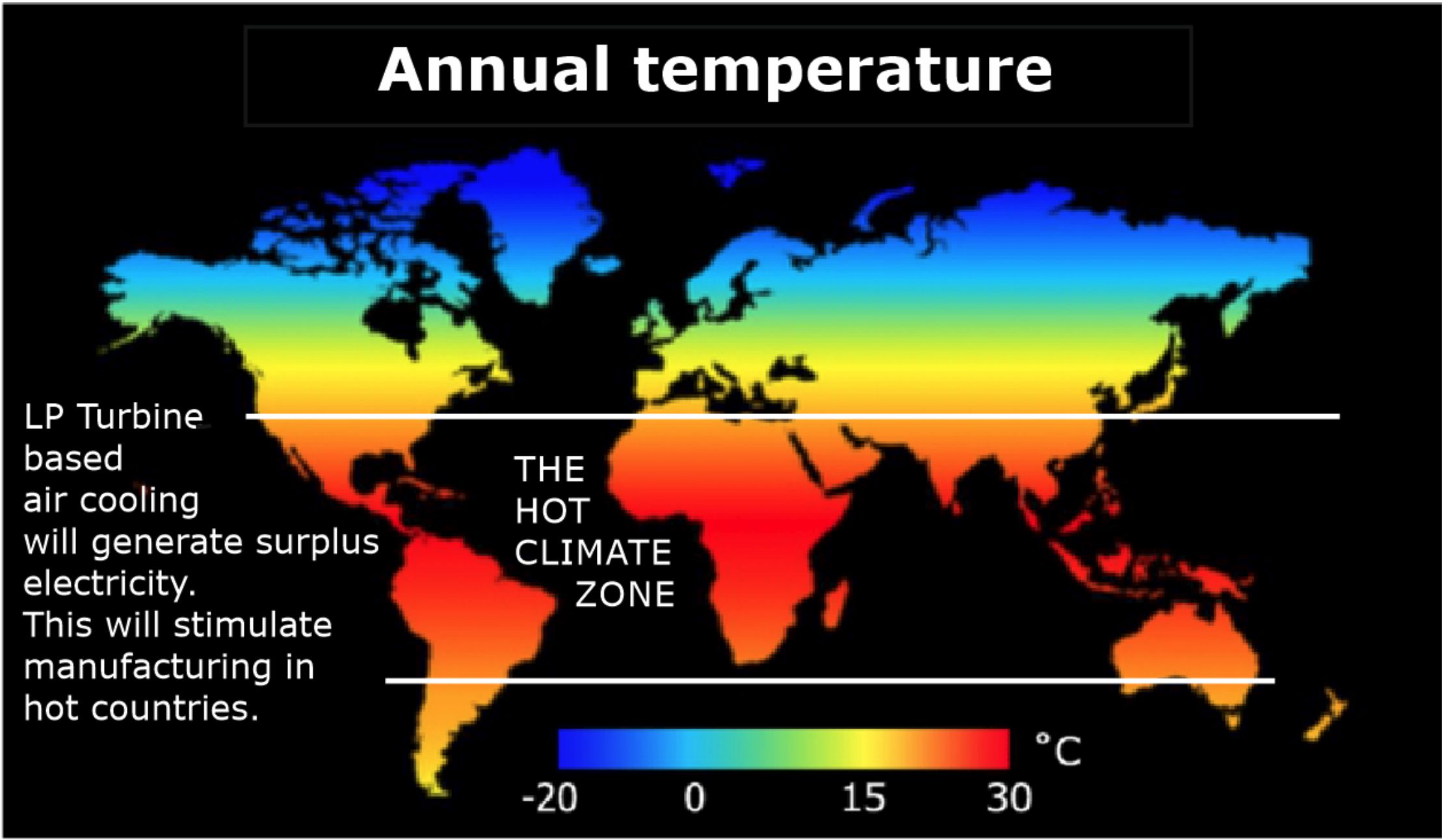
Figure 5. The world’s poorest countries are in the hot climate zone. According to past experience, hot climates are less economically productive than cool ones.
But there are grounds for optimism because LP Turbines will create three positive feedback loops in hot climates that accelerate economic growth.
These loops will provide an economic development tool that becomes more effective as the world temperature increases.
- The first feedback loop works with LP Turbines that are installed primarily to deliver air cooling or fresh water.
- The second feedback loop works with LP Turbines that are installed to supply security of cheap electricity for industry.
- The third feedback loop works when LP Turbines are used to cool the interiors of horticultural glasshouses.
2.2 The cooling based positive feedback loop
These are the key steps in the loop.
- Even the poorest countries have a small middle class that can afford air conditioning. They will be strongly motivated to move over to an LP Turbine based system that provides the triple benefits of free electricity, air cooling and drinking water.
- Restaurants, supermarkets and other stores favoured by the middle classes will also install LP Turbines to reduce their energy costs.
- Some food distribution chains patronised by less prosperous people will also find it cost effective to install LP Turbines to prevent their stocks deteriorating in hot weather. The cooler they keep their stocks, the more surplus electricity they will generate. So assisting the food supply chain will be an attractive aid investment for donor countries.
- Data storage centres generate waste heat wherever they are located in the world. But their heat disposal problems are most challenging in hot countries. This commercial handicap will move into reverse if LP Turbines are installed for server cooling and power supply.
- Ambitious entrepreneurs will use their surplus electricity to expand their businesses or create new ones.
- Other entrepreneurs will buy cheap surplus electricity from passive LP Turbine owners and use it to expand their own businesses.
- This is how the positive feedback loop will be completed.
Business expansion based on very cheap energy will create jobs at a range of pay levels, inject money into the local economy and stimulate animal spirits.
Those in the better paid new jobs will strive for energy and water independence by buying their own LP Turbine systems.
Others in lower paid jobs will earn sufficient to buy fresh food from LP Turbine cooled stores.
These economic activities will create yet more surplus electricity, giving a further boost to the economy.
The (pre amalgamation) UK Department for International Development (DFID) argued that the poor benefit from increased economic activity.
“Studies show that a 10 percent increase in a country’s average income reduces poverty by as much as 20-30 percent.” [DFID, ‘Building Jobs and Prosperity in Developing Countries, https://www.oecd.org/derec/unitedkingdom/40700982.pdf ]
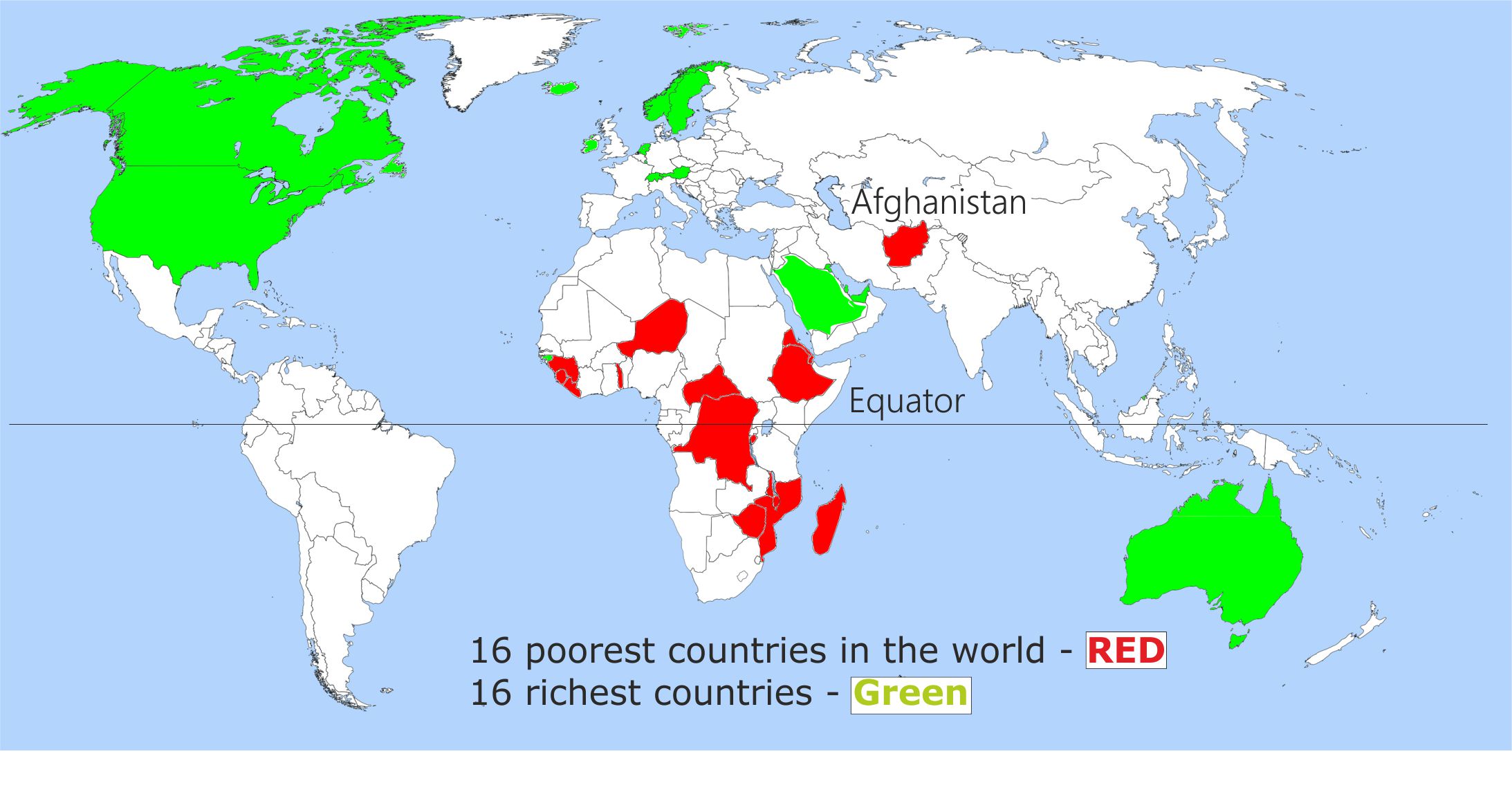
Figure 6. The world’s 16 poorest countries are close to the equator. All of them have a small elite that can afford air conditioning.
Afghanistan differs from the other poor countries in that it enjoys hot summers but cold winters. However LP Turbines will still be able to extract heat from Afghanistan’s cold continental air in winter. In addition, LP Turbines could tap into hot water springs and make good use of Afghanistan’s large geothermal energy sources. [http://aeic.af/en/energy_source/3]
It is also worth noting from the map, that the rich Middle Eastern oil producing companies are close to the equator. This means that as their oil based prosperity comes to an end, a new era of desert heat based prosperity will dawn.
2.3 AI data centres in warm climates
The developing countries are at a disadvantage in the race to improve economic efficiency by using AI, because of their weak infrastructures.
Current AI data centres consume large amounts of electricity and cooling water, both of which tend to be scarce in the developing countries. However, these problems can be overcome at relatively low cost by using Latent Power Turbines to provide both electricity and equipment cooling.
Building construction costs would be reduced because of the simplified air cooling required, and in humid countries, condensation water would be sufficient to supply service needs.
3 Case Study: Pakistan
Pakistan is a developing country. It is ranked at 150 out of 189 countries in the latest United Nations Human Development Index (2019).
Karachi is the largest city in Pakistan. It is the industrial and financial centre of the country, but 65% of its residents live in slums and 40% earn less than 1$ a day. [https://borgenproject.org/10-facts-about-poverty-in-karachi/ ]
3.1 Private homes in Karachi
In line with other hot developing countries, about 7% of homes have air conditioning. This means that these homes are significant electricity consumers. If they switched to air cooling using LP Turbines, the country would benefit from the same homes becoming micro-electricity generating businesses.
This would trigger a cooling led positive feedback loop as discussed above.
The following graphs suggest how Karachi could gain an advantage compared with London.
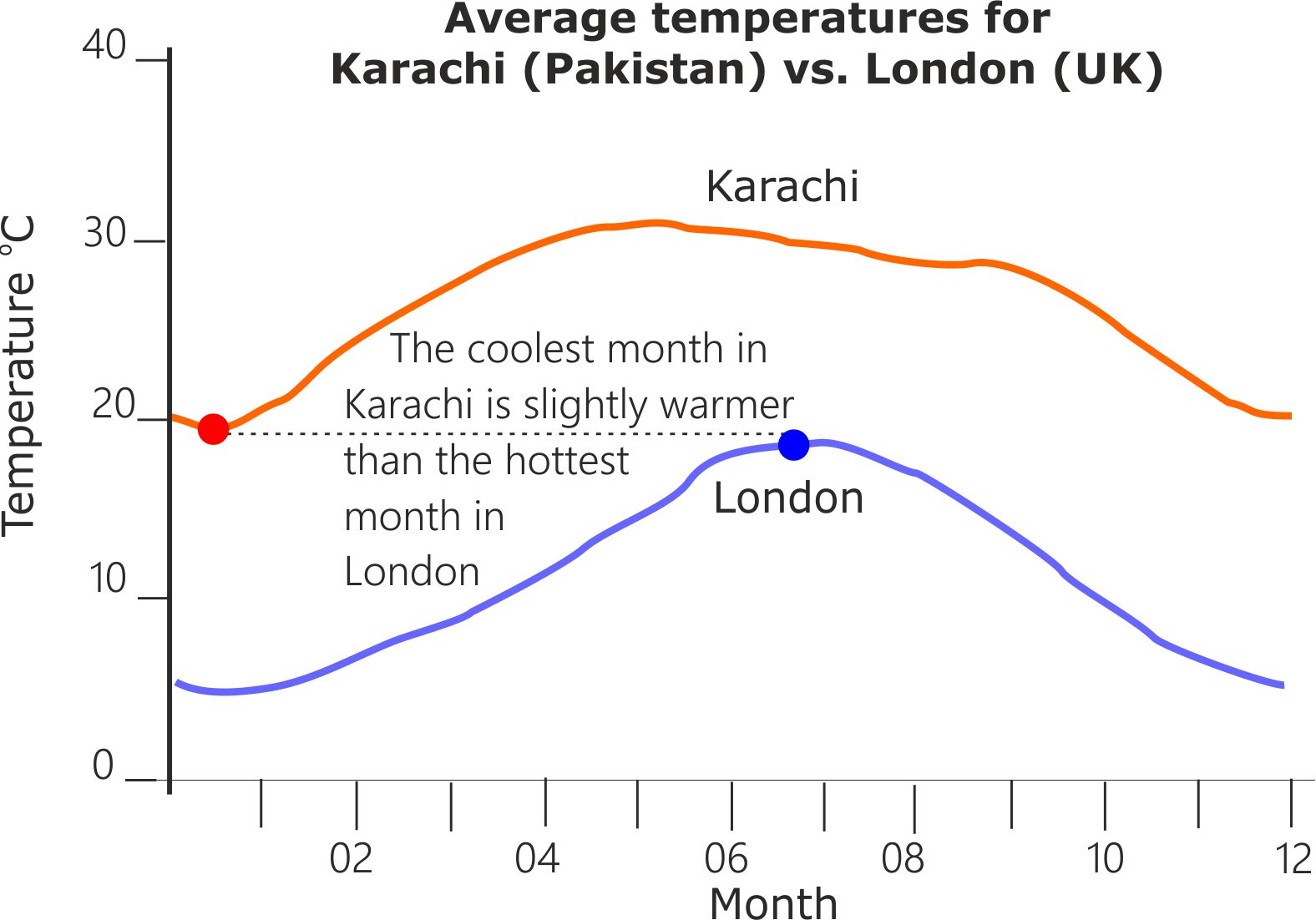
Figure 7. Throughout the year homes in Karachi fitted with LP Turbines would play a significantly larger role as micro-power stations, compared with LP Turbine powered homes in London.
London has nothing to fear from this competition because it has many other assets that make it rich. Nevertheless, it suggests how poor tropical cities such as Karachi can significantly reduce the wealth gap between rich and poor cities.
3.2 Industry in Karachi
Karachi, like the rest of the country, faces power supply problems.
“According to a survey by the World Bank, 66.7 percent of the businesses in Pakistan cite electricity shortages as a more significant obstacle to business than corruption (11.7 percent) and crime/terrorism (5.5 percent).” https://thediplomat.com/2018/11/powering-the-powerless-in-pakistan/
3.3 The power based positive feedback loop
Solving the power supply problem at a business premises level will allow LP Turbines to deliver free air cooling as a bonus. This in turn will improve working conditions, making the workforce more efficient.
Research suggests that manufacturing productivity falls by up to 4% per degree Celsius increase above 27oC.
https://epic.uchicago.edu/news-events/news/hot-temperatures-decrease-worker-productivity-economic-output
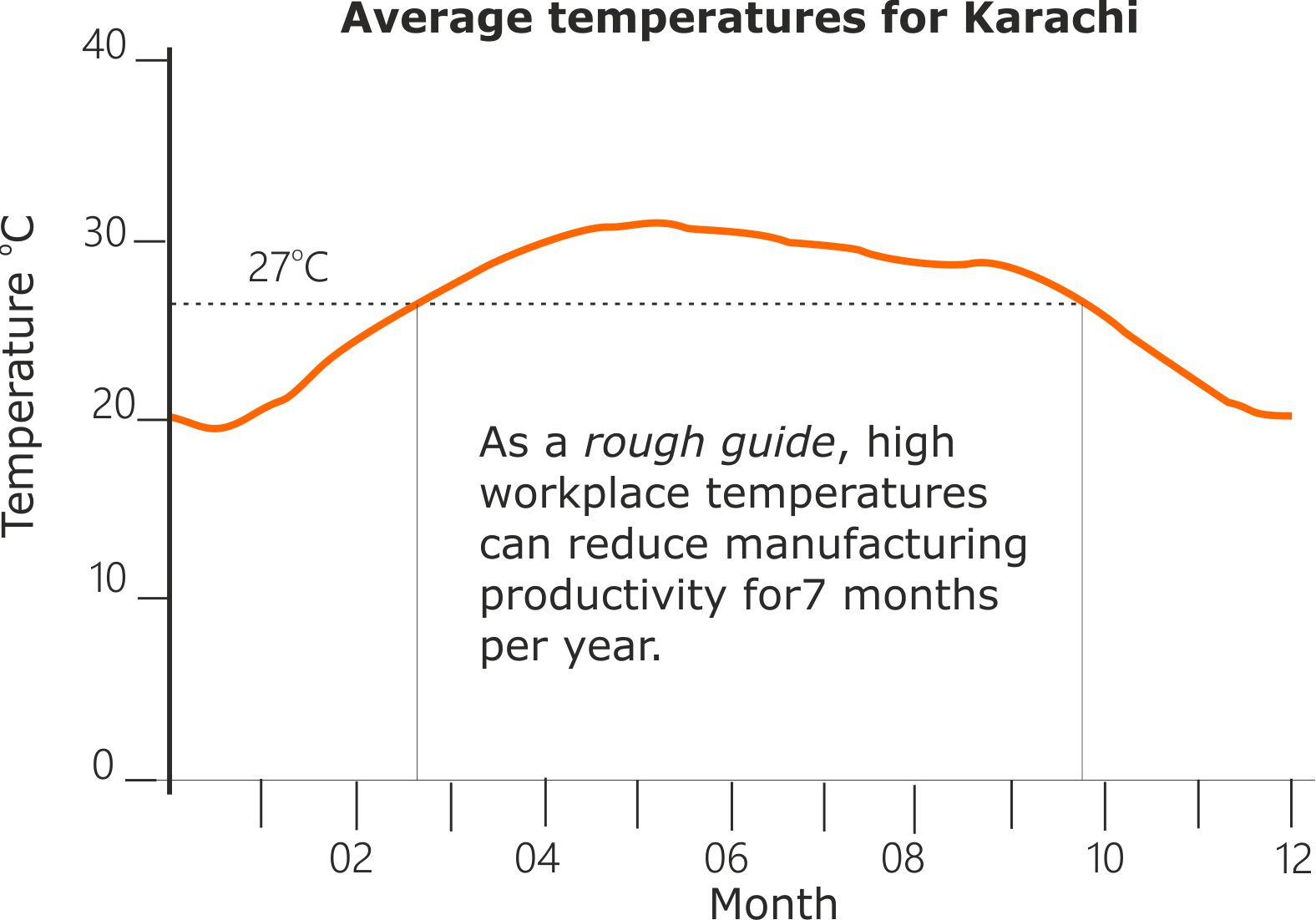
Figure 8. Global warming will only exacerbate these problems because temperatures in Pakistan are predicted to rise by about 4oC by 2100. [https://eu.usatoday.com/story/news/world/2018/07/24/pakistan-one-worlds-leading-victims-global-warming/809509002/ ]
Greater security of power supplies and better conditions for workers will encourage investment, resulting in business expansion and the creation of more job opportunities.
A synergy of positive feedback loops
Strengthening manufacturing will feed into the cooling led feedback loop because the ranks of the middle classes will swell and poorer workers will be able to buy more fresh foods and smartphones.
3.4 Water problems in Karachi
“Karachi requires a 1000 million gallons per day but unfortunately the poor, inefficient system is only able to supply half or maybe less of that amount to Karachi.” https://www.acupofkarachi.com/water-crisis-in-karachi/
LP Turbines would offer a backup water supply for businesses and households that have access to one. They would also help reduce the strain on the supply for less fortunate people.
4 The horticulture based positive feedback loop
Horticultural glasshouses can protect crops from weather damage in hot climates but this protection has limitations.
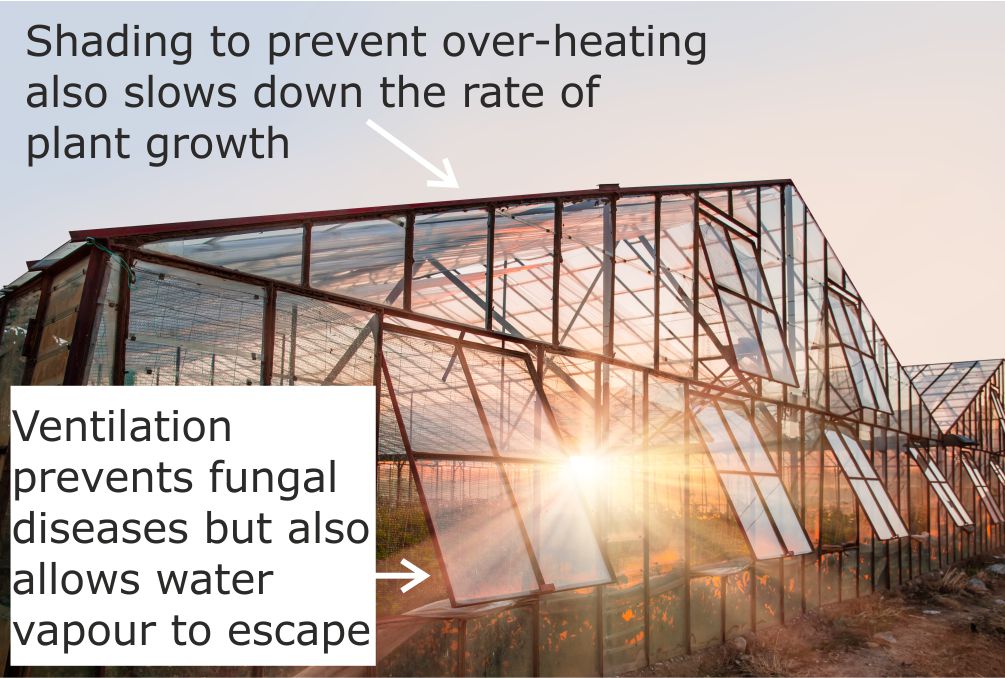
Figure 9. Conventional glasshouses are an imperfect form of crop protection in hot climates.
Benefits
- Crops are protected from weather damage.
This is important because global warming is making the weather more violent. - Irrigation water losses are reduced.
Important because global warming is also making rainfall more erratic. - Insect pests can be kept out, reducing insecticide usage.
Important because pests are evolving to become resistant to insecticides. https://en.wikipedia.org/wiki/Pesticide_resistance ] - LED lighting during darkness hours can reduce growing times, allowing the annual food yield to be increased.
Important for preventing starvation as the world population increases.
Limitations
- Ventilation is required to reduce the humidity of the air to prevent fungal diseases. It is also necessary because plant growth extractsCO2 from the air, so the CO2 depleted air has to be replaced. Unfortunately this also allows precious water vapour to escape.
- Shading to reduce solar heating can also slow down photosynthesis, hampering plant growth.
- Glasshouse construction costs have to be allowed for.
-
Glass can shatter when hit by large hailstones and flying objects during storms.
By using LP Turbines to cool and dry the air instead of shading and ventilation, the light and moisture loss problems are overcome. In addition, as we will explain, the electricity generated can be used to build a second generation of cheaper, but more robust glasshouses.
Here are the main features of an LP Turbine cooled glasshouse.
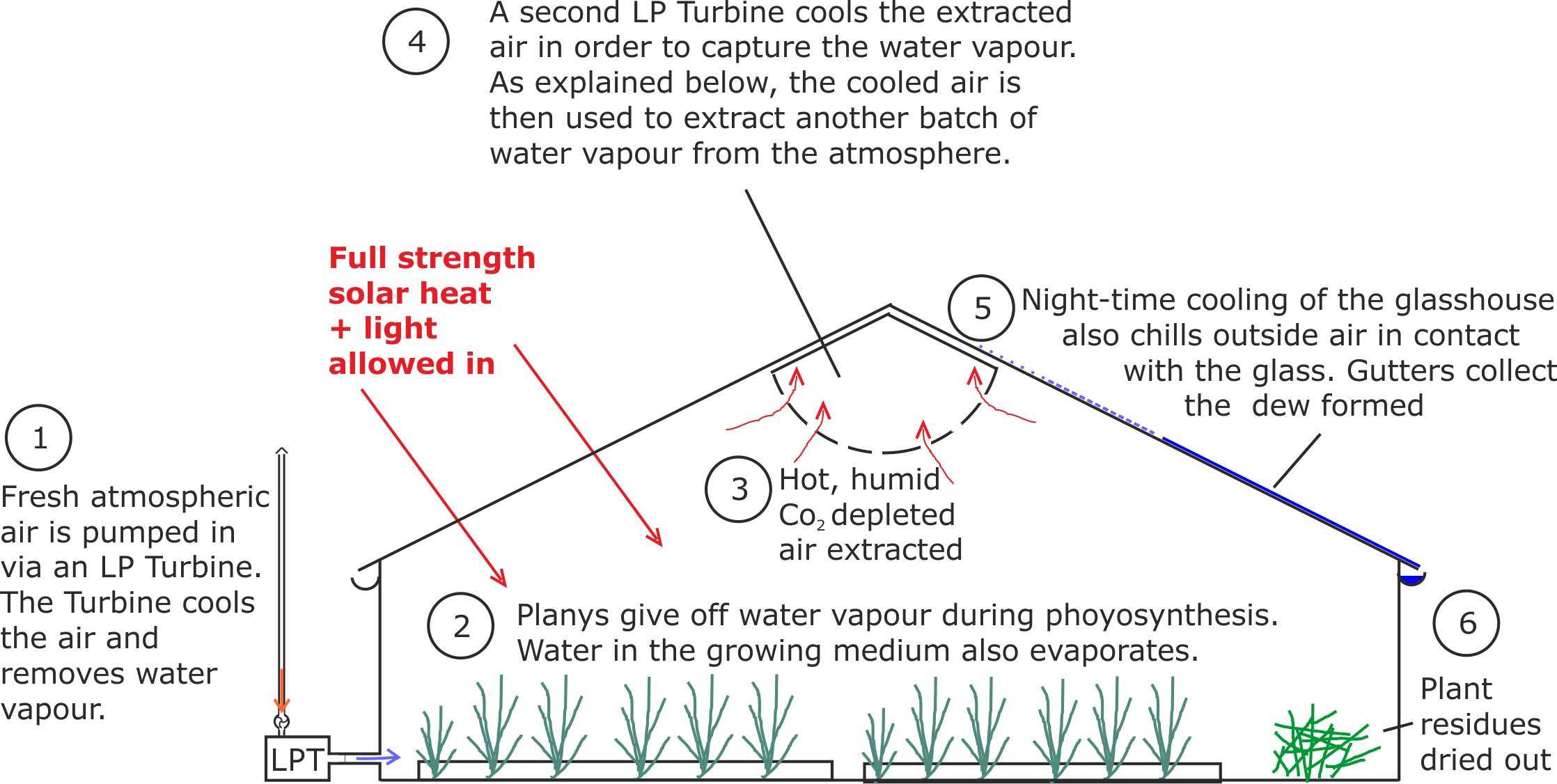
Figure 10.
Condensed water from the cooled incoming air is used for irrigation. During photosynthesis, the plants give off water vapour to keep cool and absorb CO2 from the air in order to grow. The resultant humid, CO2 depleted air has to be replaced by fresh dry air for healthy plant growth to continue.
Water for irrigation is captured from the atmosphere using several mechanisms.
- Water is condensed from the fresh atmospheric air when it is chilled by an LP Turbine before pumping into the glass house.
- The air extracted from the glasshouse is chilled by an LP Turbine in order to condense its moisture. This chilled air is then used to cool a distillation unit that condenses additional moisture from the atmosphere.
- At night the glasshouse interior cools encouraging dew to form on the outside surface of the glass. This cooling also encourages desert fog droplets to settle on the glass.
- The gutters used for dew collection also catch rainfall.
The system includes two LP Turbines, one to cool the incoming air, the other to cool the exiting air. Between them, they generate far more electricity than covering the same ground area with solar panels.
Apart from leakages through gaps in the structure, the only water that has to leave the glasshouse is that stored inside the commercial product. So, with good husbandry, the glasshouse could become a modest net producer of fresh water.
The dried waste plant material can be converted into biochar and the wood vinegar given off during carbonisation used as a soil improver. [https://en.wikipedia.org/wiki/Biochar]
Some of the electricity can be used to help make the farm more self sufficient. For example, by manufacturing nitrogen fertiliser from air and water using a modified Birkeland-Eyde process. [See https://en.wikipedia.org/wiki/Birkeland–Eyde_process for details of the original process and the following article for a scalable modern variation https://www.chemicalprocessing.com/articles/2019/environmentally-friendly-ammonia-production-beckons/]
Using desert sand to make sheet glass and other building materials
(a) The opportunity
Where suitable silica sand is available, (for example, from the Kharan Desert in Pakistan or the Sahara in Africa), the bulk of the electricity could be used to melt sand in order to manufacture silica glazing glass and building sand. These materials could then be used to build additional glasshouses, helping to create a positive feedback loop that results in the rapid expansion of the whole glasshouse complex.
But glazing glass can shatter if its support frame does not allow for thermal expansion or if it is hit by a moving object.
Pure silica glass is thermally superior to standard horticultural glass because it expands less when heated.
The impact shattering problem can be minimised if it is installed as small tiles in a framework, rather than as large sheets. The framework could be made from heat sintered desert sand. Glass tiles will also travel better if they have to b shipped from the foundry to the building site over rough roads.
(b) The problem
There are two characterises of sand (silicone dioxide) that make melting difficult.
These are the high melting point (1,723oC) of pure sans and the fact that silicone dioxide is not easily heated by microwaves because it is not a dipolar molecule.
The alternative to microwave heating is to insert metal electrodes into the sand and pass an electric current through them. The problem here is that the electrodes will not last long at the melting point of sand.
Opportunities for engineering researchers
Published experiments demonstrate that these problems can be overcome in the laboratory. But the technology is not currently available for use on a commercial scale.
Any researchers who can make a breakthrough in scaling up sand melting and sintering processes will contribute to revolutionising civil engineering and the way we grow our food.
Other potential fields of research for an LP Turbine era include the integration of sea water desalination and the energy intensive Solvay process for making sodium carbonate. This chemical can then be used as one of the ingredients for making relatively low melting point glass.
Perhaps sintered sandstone blocks could be made by microwave heating thick sand and water slurry in a robust pressure cooker. The steam given off could be captured for reuse by cooling it using LP Turbines. (The steam would be unsuitable for driving conventional steam turbines because it would include sand dust.)
At the present time natural gas is used as the heat source for glass making furnaces, but hydrogen could also be used. This suggests an alternative development model for countries with arid lands, access to the sea and the ability to attract investment. An industrial complex on the coast would carry out desalination, hydrogen production, glass making and other processes, with the large amounts of electricity they require being supplied by horticultural glasshouses inland.
Alternatively, sea water could be piped inland for processing.
Other research opportunities include designing a water saving closed loop system for making pure silica glass in arid regions. First electricity produced by LP Turbines would be used to split water into hydrogen and oxygen. The gases would then be reacted together to produce water vapour and heat for melting silica sand. To complete the cycle, the vapour could be cooled by LP Turbines to produce water by condensation.
In an LP Turbine era, temperate countries will generate most of their electricity locally and high voltage national grids will become redundant. The high voltage power lines could be dismantled and given to developing countries requiring a grid for transmitting electricity generated in remote desert regions. For example, the UK could donate its Beauly to Denny power line.
This would be very popular with the Scottish tourist industry!
Using desert sand to make concrete
The rounded grains of desert sand are unsuitable for making concrete for the foundations of the glasshouses. But they can be converted into sharp grained building sand by first melting the sand to create glass and then crushing the glass to produce sharp grains. There is a world shortage of building sand because humanity is using it far more rapidly than nature is eroding the rocks to make it. So, after a region has built sufficient glasshouses to meet its needs, it could continue using the electricity generated in cooling the glasshouses to manufacture building sand for export.
All of the countries in the developing world either have indigenous supplies of silica desert sand or can import it as a low cost raw material.
In order to speed up the development of glasshouse farming, entrepreneurs will need a range of compact, readymade industrial plants for carrying out key processes on site.
Mass producing micro-plants to meet these demands offers a new opportunity for engineering businesses.

Figure 11. Micro sized glass foundries, biochar reactors and fertiliser plants could be mass produced to bring down their manufacturing costs. Rich countries with hot regions such as the USA, Australia, Israel, the Middle Eastern oil producing countries and China would be early adopters, with the purchase prices falling as the market matures and developing countries enter it.
In addition to hardware, farmers must also be given training, to ensure that they use nitrogen fertiliser and biochar correctly.
Financing the new glasshouse agriculture
The first and second feedback loops discussed above will increase prosperity and create demand for fresh food in the cities. This will allow glasshouse farms to earn a predictable income. In addition, their crops will reach their city markets in a fresh, high price condition because LP Turbines can be used to pre-cool the product before shipping and also make ice for keeping it cool during transit.
The total investment opportunity, from building robust glasshouses to delivering fresh produce to the consumer will be a very attractive ethical investment for pension funds and other investors. It will also provide a home for investment funds that can no longer be invested in the defunct fossil fuel industries.
5 Rolling back the deserts

Figure 12. Expanding deserts are destroying villages on their arid savannas margins.
For example, the Sahara Desert has expanded by 10% during the last hundred years. [https://en.wikipedia.org/wiki/Desertification] In part this problem is caused by global warming. But ironically, modern medicine has helped because more babies are being born and living to adulthood. As a result, the marginal savannah lands are eroding due to overgrazing and the excessive burning of brushwood for fuel.
The problem is so massive that converting silica sand into tough horticultural glass and sharp building sand is not going to remove the bulk of the invading sand. But on the other hand, it also provides investors with confidence that their savannah region investments are not going to run out of two key raw materials; tropical heat and desert sand.
Investment will shift parts of the local economy from a form of subsistence farming that overworks the land to one that provides food, employment and a flow of revenue into the area. Glasshouse farming that can operate largely on moisture extracted from the atmosphere will provide some food and income even in draught years. This will create a safety net for the majority of indigenous people who will be able to concentrate on developing best practice mixed farming methods. Their micro businesses will be assisted by locally produced low cost nitrogen fertiliser and building sand, better communications with markets and other services offered by a glasshouse agricultural hub.
In the long term, greater affluence in rural areas will enable village LP Turbines to be installed and electricity supplied to homes. This will allow electric heating elements to be used for cooking, instead of having to destroy desert stabilising woodland for firewood. The cooling produced by village LP Turbines could be used to create a community heat wave shelter, a clinic with cool vaccine storage and a perishable farm produce store.
Increasing the productivity of glasshouse sites on marginal land
The presence of glasshouses could affect local micro-climates. Glass roofs will reflect solar heat differently to the surrounding land and LP Turbines will reduce both the moisture content and temperature of air. So, until the research suggests otherwise, individual glasshouses should be kept moderate in size and well spaced apart.
Fortunately, their presence also provides resources that help to make the adjacent land more productive.
Here is an example of this collaboration.
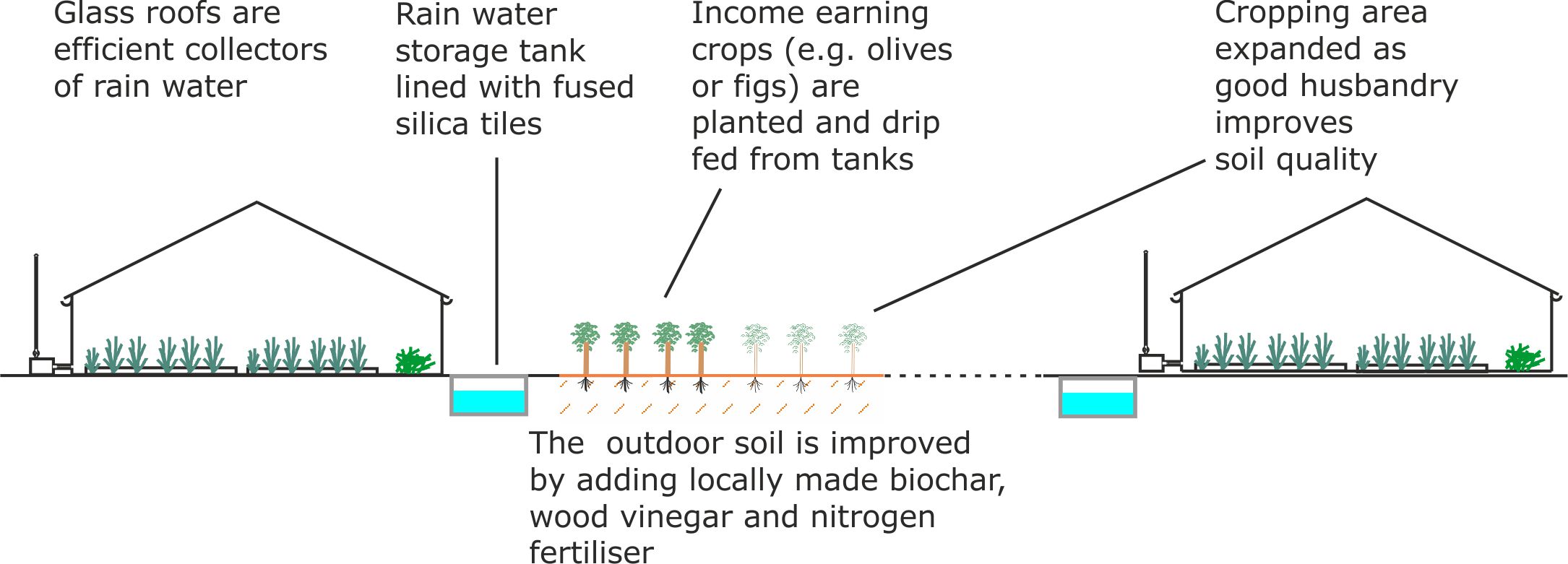
Figure 13. The savannah-desert margins enjoy short wet and long dry seasons. Glass roofs are a good mechanism for collecting wet season water for storage [About 10-60 cm/year].
Unfortunately building rows of glasshouses to keep out an encroaching sand desert is unlikely to be effective because wind blowing over the roof can create a low pressure region behind the glasshouse that draws in sand. In true sand desert regions, glasshouses may need to be built as streamlined buildings that taper gradually to the ground.
6 Delivering states that work for the people
6.1 Collecting energy taxes
Governments rely on tax collection to finance the education, infrastructure and other systems that support economic development. But, according to experts reporting to the United Nations “The intensity of (taxation) losses is substantially greater in low- and lower middle-income countries: and in sub-Saharan Africa, Latin America and the Caribbean and in South Asia compared to other regions.” [201,7 https://www.wider.unu.edu/sites/default/files/wp2017-55.pdf]
The widespread adoption of LP Turbines provides an opportunity for collecting taxes in a simple and secure way by taxing the electricity output of LP Turbines.
The advanced nations will need to collect these taxes just as much as the developing ones and could take the lead in rolling out the technology required. This would not have to be invented from scratch because in essence it already exists in the form of a secure system for remotely reading Smart electricity meters.
A Smart system that taxes all energy at source is more likely to be robust than complex taxation systems that rely on accurate financial reporting and include multiple exemptions that cunning accountants can exploit.
The penalties for non-payment of energy taxes can also be simplified and become more compassionate, while remaining firm. In the event of an LP Turbine owner or registered user repeatedly failing to pay their energy taxes, their LP Turbine could be switched to a ‘Tax Payment’ setting. This would (for example) restrict them to drawing sufficient electricity to run one LED electric light and one electric food cooking element for one hour a day. Their LP Turbine would continue to generate electricity at maximum output but the large surplus would be sold by the state to pay off the tax debt.
In hot climates, surplus electricity will usually be generated when operating the LP Turbines primarily for air cooling. Nevertheless, it is preferable to tax the total electricity output, whether the surplus electricity is used for. This will encourage the owner to put their surplus electricity to good use, rather than squandering it on some pointless process, simply to keep their Turbines running.
The government could pay for the installation of LP Turbine systems in less affluent districts, but recoup its costs by imposing energy taxes immediately people start using them.
6.2 Be Patriotic - Fly the Turbine!
Most outward displays of affluence such as flash cars and expensive jewellery emphasise differences between the rich and poor. But LP Turbines are different because the more the rich spend on them to cool their homes, the more taxes they pay and the more surplus electricity, jobs and prosperity they create for the nation.
So to stimulate their installation, owners should be encouraged to brag about the patriotic contribution they are making by mounting their LP Turbines conspicuously at the front of their homes and painting them in national colours.
6.3 Reducing corruption
Corruption drives economic growth down by increasing the cost of running businesses, handicapping public services and deterring foreign investment.
But LP Turbine powered businesses will be burdened to a lesser extent because they will have total control over their power supplies and possibly fresh water independence as well.
This emerging business culture will also offer a new career option for those who currently see life as a corrupt civil servant as their best route to prosperity.
Hopefully, an increase in tax revenues will allow lower grade public servants to be paid a living wage eliminating their need to resort to corruption to survive.
If the revenue from energy taxes is sufficiently high, it may be possible to abolish any existing streams of tax revenue that are particularly vulnerable to corruption.
6.4 Reducing goods theft
People will need tools as well as cheap electricity to break out of poverty.
But this creates a problem because the worldwide boom in electricity consumption threatens to cause a corresponding boom in electrical (and other) goods thefts.
An international strategy for reducing goods theft
Using an internationally agreed coding system, all non-disposable goods having black market value would be assigned a unique PIN.
Manufacturers would print this PIN on their products as a prominent QR code that can be read using a smartphone. In addition, more expensive items would have the code written on them in hidden microdots.
On purchasing or being gifted a product, the new owner would be encouraged to scan the QR code and register their product ownership on a national database. Worldwide, all databases would have the same format, allowing the police and general public to make international product ownership checks.
- This system would make it easy for the police and insurance companies to identify goods stolen from prudent owners.
- Anyone offered second hand goods would be able to scan the QR code, to ensure that the seller was the legal owner.
- On making a second-hand purchase, the smartphone app could be used to securely update the legal ownership records.
- Thieves would also have access to the QR code checking app, making them less inclined to steal registered goods.
- In order to allow goods to be legally traded by third parties on the second hand market (for example in charity shops), the donating owner could send a secure ‘Ready for ownership transfer’ message to be sent to the database. This message could be read by potential buyers wishing to check the honesty of their pending purchase.
- The ‘Ready for ownership transfer’ update could be made retrospectively if the charity shop (say) discovered that this was required.
- People who decline to register their purchases will find it difficult to insure their goods and receive little sympathy from the police following a theft.
- Provided that non-compliance with the registration system remains low, herd immunity will still protect the population as a whole because the market for stolen goods will shrink.
- Consequently, consumers who do not have access to a smartphone will still enjoy considerable protection.
- All PINs will need to be registered with the international network of databases before products leave the factory. This will discourage criminals from removing the original QR code and replacing it with a fake that stores a bogus PIN.
This proposal will help to fight poverty and stimulate economic growth by reducing the risks for entrepreneurs. It will also make it easier for them to raise start-up funds and gain company insurance.
If the scheme covers knives and other potentially offensive weapons, it might help to reduce their criminal use.
7 Two more positive feedback loops
7.1 The tropical disease feedback loop
With greater economic wealth, pharmaceutical companies have a greater financial incentive to develop drugs and other treatments for malaria, bilharzia and other parasitic infections. This will in turn lead to improved health and a further increase in economic wealth.
7.2 The birth-rate feedback loop
Evidence from developed countries suggests that improved economic security helps to lower fertility rates. This starts a feedback loop because the smaller number of children born can enjoy better healthcare, gender equality and education. This leads to even lower birth-rates in the next generation.
8 Reducing the economic refugee problem
There are two entirely different ways of looking at the current economic refugee problem that blights humanity.
Many voters in Europe, the USA and other developed regions see economic refugees as a threat that must be defended against. But these refugees are also a valuable human resource. They are energetic people who are prepared to endure hardship, humiliation and the loss of their life savings in order to find a better life in the advanced countries.
LP Turbines provide a solution to keep everyone happy.

Figure 14. The populist solution to solving economic refugee problems is to build expensive walls and run up taxpayer bills hiring border guards and sea patrols to keep the unwanted foreigners out.
But there is another way.
Instead of building fences and walls to keep refugees out, the advanced countries could support these enterprising people by helping them to set up LP Turbine powered businesses in their home countries. To do this we need to identify the financial tipping point at which bold economic refugees choose to become bold entrepreneurs in their home countries instead.
As a rough guide, illegal migration into Europe from the Middle East costs at least $3,000 per head.
[https://www.voanews.com/middle-east/syria-europe-price-they-pay]
By helping to put systems in place that reduce the down payment cost of buying an LP Turbine plus the basic electrical equipment required to launch a business to below $3,000, migrating to the advanced countries will lose its attraction.
LP Turbine based businesses that make the early entrepreneurs rich will encourage others to follow their example.
9 Africa
The national boundaries shown on maps of Africa reflect the national needs and military might of Europeans during their nineteenth century rush to grab African natural resources. These externally imposed boundaries ignored existing tribal territories. As a consequence, post-colonial African leaders have experienced difficulties when trying to create national identities that clash with tribal distributions.
LP Turbines have the potential to reduce frictions between neighbouring tribes because they can be used to create prosperity growing outwards from the village level.
This localised approach to modernising Africa provides a great opportunity for the aging but capital rich advanced nations to invest in youthful but capital poor Africa.
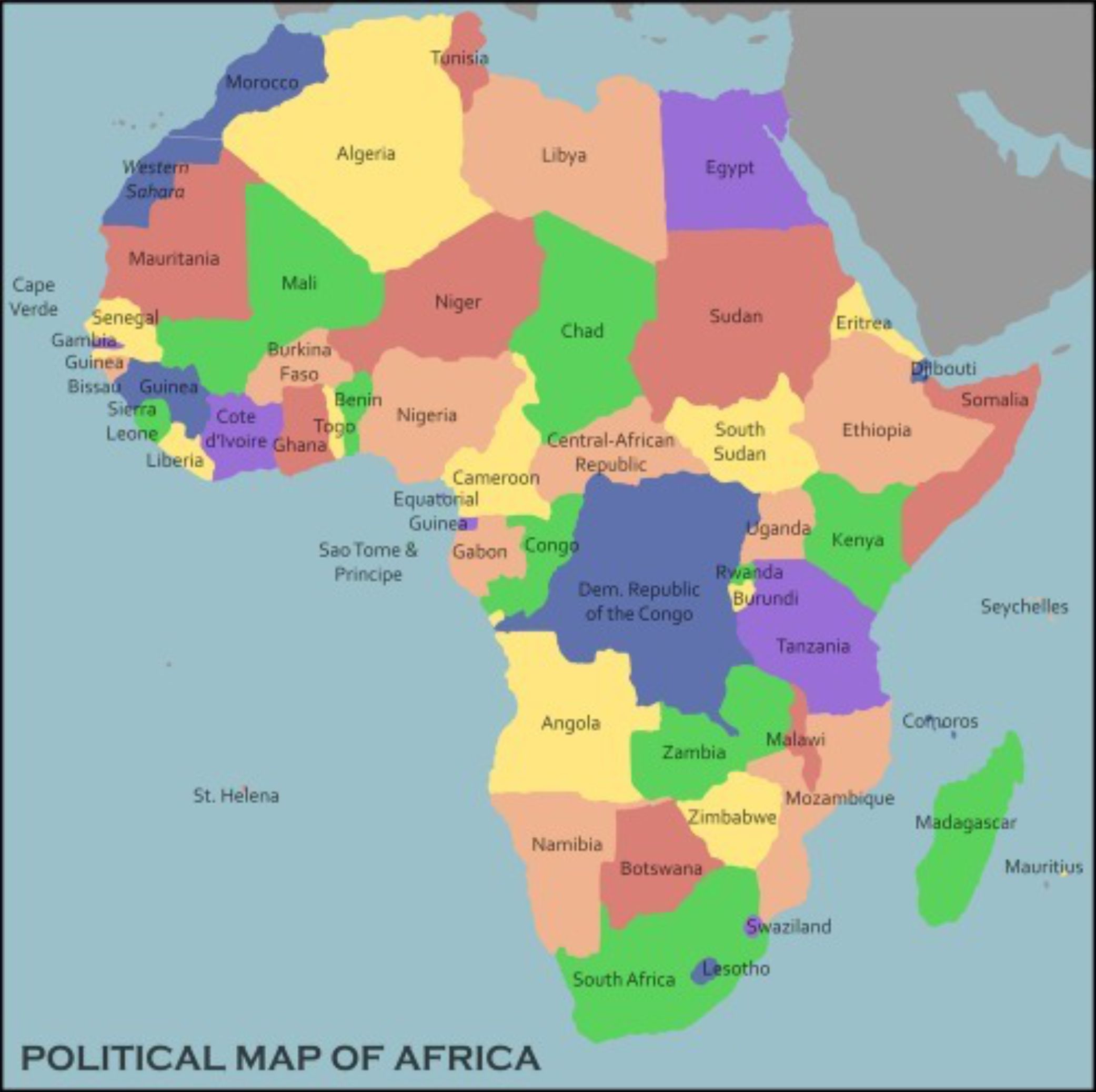
Figure 15. The national boundaries of modern Africa were imposed on the indigenous peoples and do not reflect tribal loyalties. Disputes are exacerbated by the uneven distribution of mineral resources, water and hydroelectric power. However, tropical heat is ubiquitous across the continent. So LP Turbines with their cheap electricity, air cooling and condensation water offer a dispute free route to continental prosperity.
Africa also possesses vast quantities of silica sand, with approximately 30% of the continent being covered with sand deserts. Only a tiny fraction will have to be converted into building sand to meet all the civil engineering needs of a new Africa
Living with the land ownership problem
External investment in glasshouse agriculture could provide a new way forward in countries where investment in individual small farms is difficult because it is unclear who owns the land [Who owns land in Africa? (cgiar.org)].
The tribal farmers could collectively come to legally binding agreements to permanently hand over a portion of their land to an agri-business in return for a range of services. These could include the provision of free nitrogen fertilisers (and advice on their judicious use), soil analysis, agricultural evening classes, supplementary food during the hungry season, cold storage for harvested crops, free battery charging and electric cooking access, and internet cafe style computer access to the internet. Farmers currently working the land to be taken over by the company would be guaranteed local jobs within the company.
Long term, when the agribusiness prospers, the owners could agree to build a combined schoolhouse and community cool refuge for use during heat waves.
The agri-businesses would have a vested interest in lobbying for improvements in the regional roads network and spare capacity in their delivery trucks could be used for taking the indigenous farmers and their products to local towns.
This partnership would provide a range of routes for farmers and their children to graduate from subsistence farming to more prosperous lives.
In order to combine the skills of large investment companies with a personal interest for investors, investment management companies could split the investors into syndicates, with each syndicate being involved with a small number of ‘village’ projects and given remote access to their A.G.Ms etc.
Competing with the appeal of terrorism the Sahel

Figure 16. The Sahel is a semiarid region forming a transition zone between the arid Sahara to the north and the belt of humid savannas to the south.
The 50 million plus inhabitants of the Sahel suffer a range of woes including the desert spreading south, regular draughts, poverty, poor governance and being the victims of terrorism and inter-terrorist group violence. The response of the West has been to send troops to suppress the violence, but this has debatable benefits [Instability and Terrorism in Africa’s Sahel: A Primer - Just Security].
We argue that a better strategy for the Western powers would be to invest in the economic development of the region, including using the technologies discussed on this website. This will reduce the temptation for understandably angry youths to turn to terrorism.
10 Case study: the Makoko floating slum
People have been living in the floating slum of Makoko since the nineteenth century. The survival skills of its inhabitants could be tapped into and technologically enhanced to provide a source of ideas for others forced to consider moving their homes on to stilts as sea levels rise.
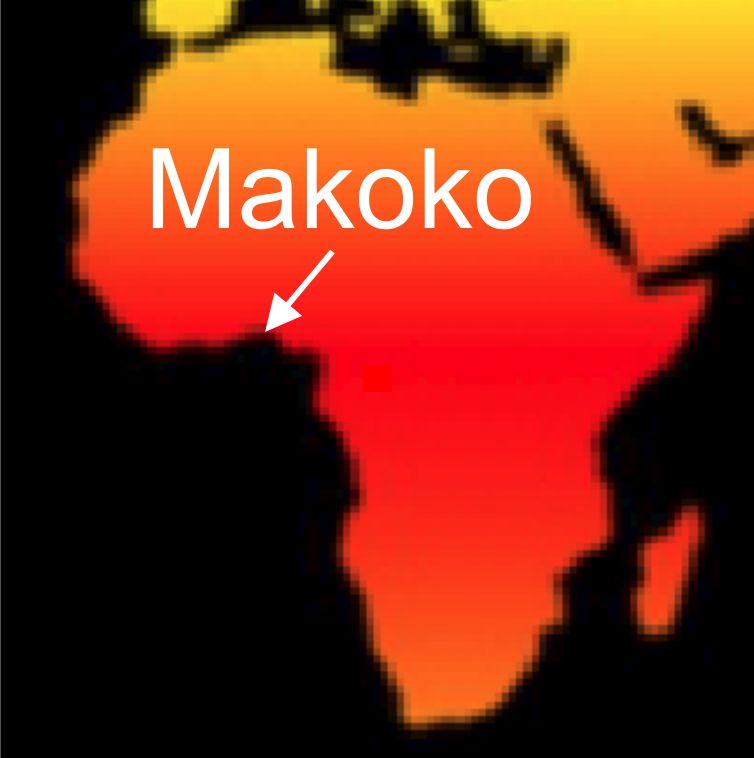
Makoko is a floating slum in a lagoon on the waterfront of Lagos, Nigeria. It has an estimated population of up to 250,000 people. Fishing is the main source of employment but pollution of the fishing ground water is killing off the fish.
Schooling, sanitation, healthcare, access to low cost fresh water and malnutrition are major problems for the residents.
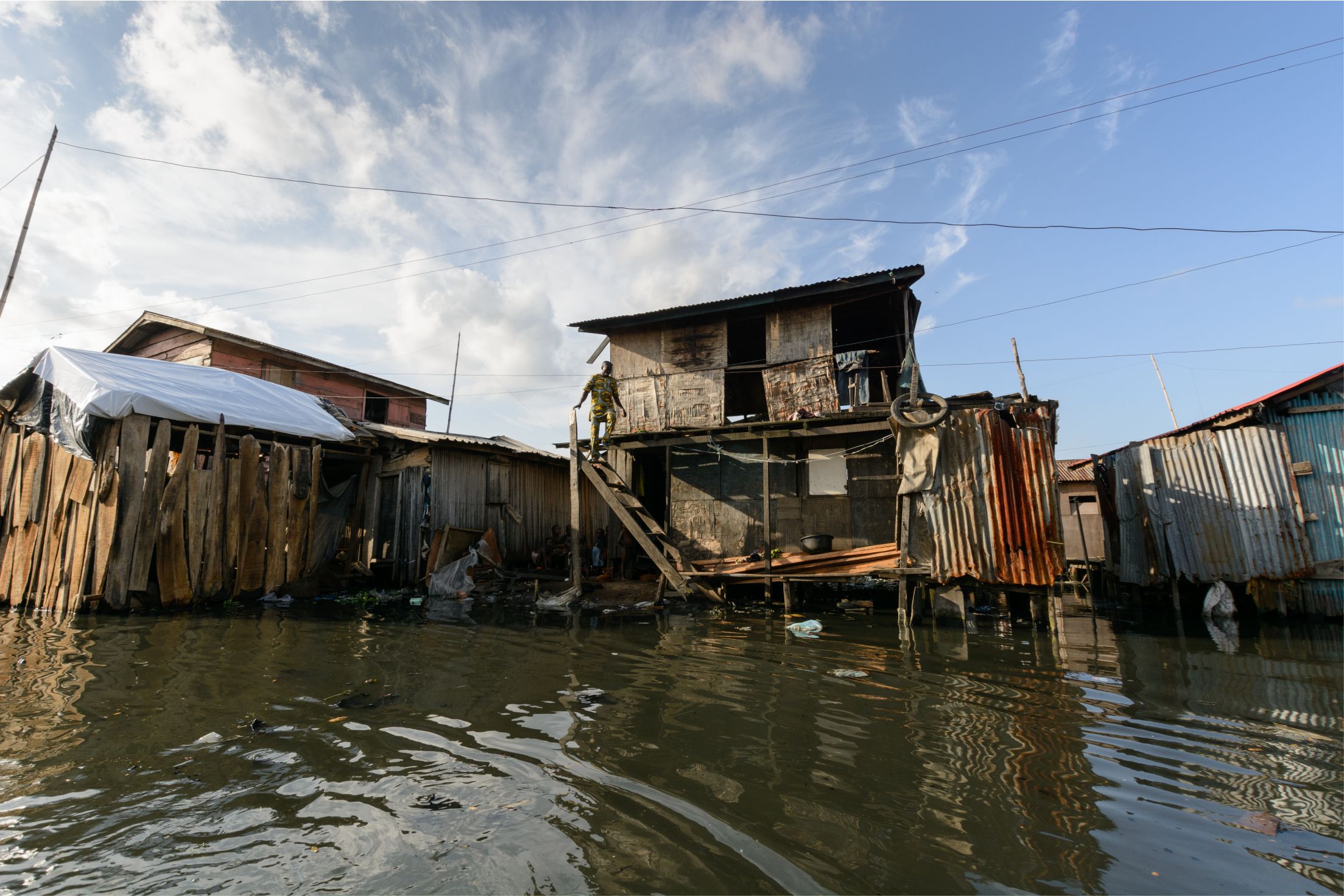
Figure 17. A house on stilts in the Makoko floating slum, Lagos, Nigeria.
This slum has been under threat of demolition by the government since 2012. But the inhabitants of Makoko have shown remarkable resilience in fighting back against dispossession. https://maptia.com/calinescu/stories/fighting-for-makoko
Given the resourcefulness of the inhabitants, it may be that within two generations, the slum could be upgraded so that it becomes a desirable African Venice that earns additional income as a tourist attraction.
With pump-priming funding, modern technologies such as local grid electricity, community radio to stimulate local democracy, mobile phones and electric cooking elements could be called upon to make this transition.
Here are some of the contributing technologies that relate to LP Turbines.
- Electricity could be generated by LP Turbines and supplied to homes via overhead lines.
- LP Turbines could be used to produce ice, to keep the fish catches fresh.
- The LP Turbine cooled glasshouse concept could be adopted to create floating power generating schools and clinics.
- Tough silica glass for the floating glasshouses could be sourced within Nigeria, from the desert margins in the north of the country.
- Cheap LP Turbine electricity is likely to lead to a worldwide revolution in how we treat and recycle sewage. Makoko should be able to benefit from this, recycling its sewage, instead of killing off fish by dumping it in the sea.
- Expensive borehole water could be replaced with condensation from LP Turbines and desalinated water.
- Makoko could provide an excellent return for aid investment, with architects and engineers developing knowhow that could be used in waterfront developments for crowded coastal cities around the globe.
- As far as possible, upgrading Makoko should be led by local talent, with engineering and marine architecture scholarships being awarded to young residents at a very early stage in the project.
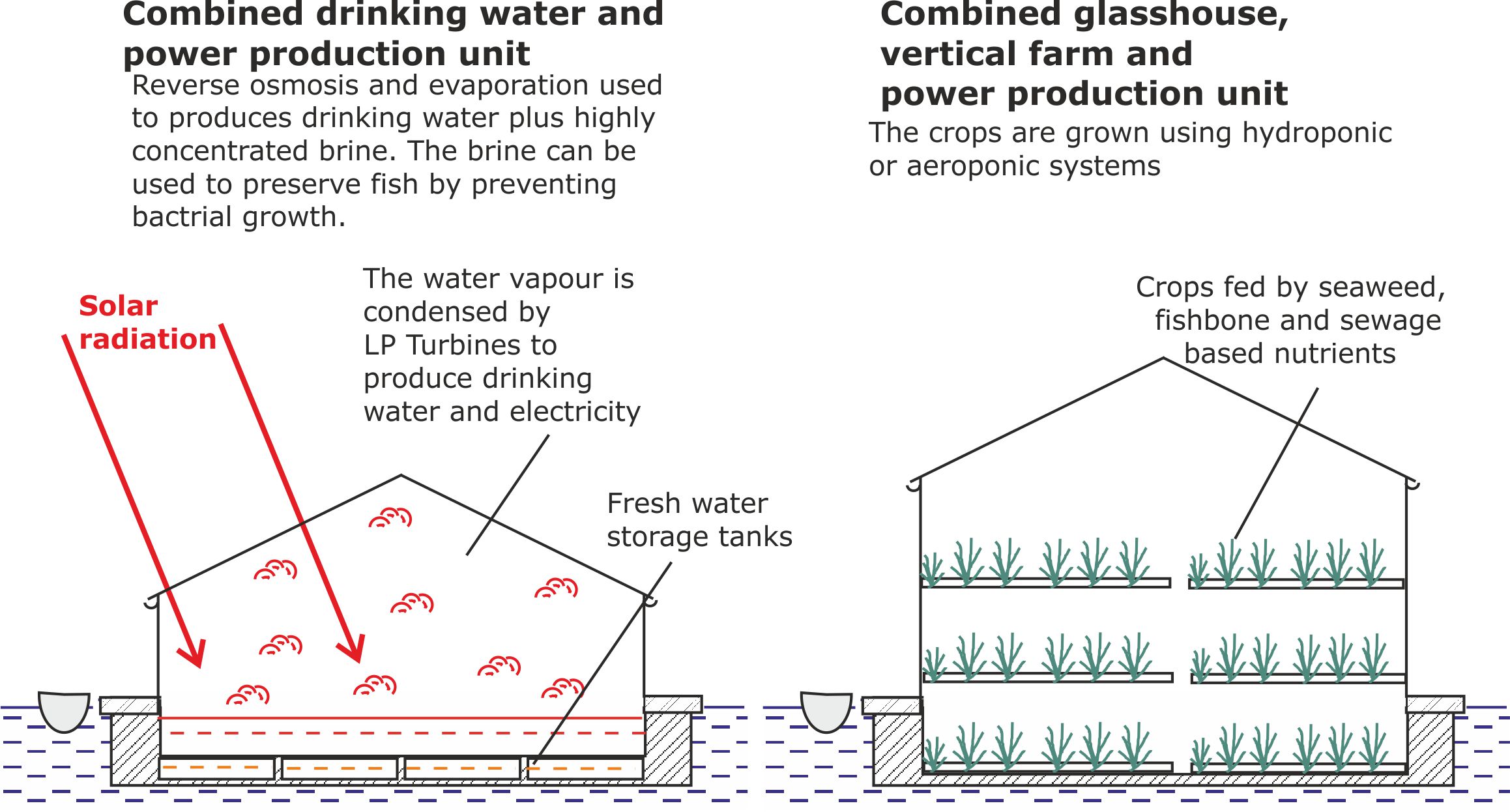
Figure 18. Two generations into the future, the Makoko settlement could include a number of structures that help to make the community self sufficient. The structures should be designed in close consultation with the community so that, as far as possible, local boat building skills and local materials are used in their construction. To prevent the monopolisation of assets by village chiefs, bullies or criminals, the new infrastructures need to have a strong legal status based on community ownership.
PROPOSAL: The Makoko Climate Change Survival Academy
The aims of the academy would be
(i) To combine traditional Makoko survival knowledge with the latest technology, to create a community that is prosperous, peaceful and healthy.
(ii) To provide a taste of the modern Makoko experience for representatives of low lying island communities who are considering their survival options as sea levels rise.
(iii) To offer training in the practical skills required to build a healthy and sustainable Makoko style community.
Hopefully, future Nigerian governments will cherish an improved Makoko as part of the national contribution to teaching the world how to cope with global warming.
11 LP Turbines and Black Lives Matter
The continent of Africa has been an important resource centre for the development of the modern world. But few black Africans, whether they live on their continent of origin, or form part of the modern African Diaspora have received a fair share of the benefits. The present worldwide Black Lives Matter campaign highlights the unfairness surrounding this resource exploitation.
Today the African Diaspora is disproportionally represented in the poorest communities of the developed countries and also suffers status discrimination. Hopefully, the benefits of LP Turbines discussed on other pages will go a long way towards addressing the poverty issues. But it may be that in the long run, it is the benefits of LP Turbines in Africa that give black people their equal status in the eyes of other ethnic groups.
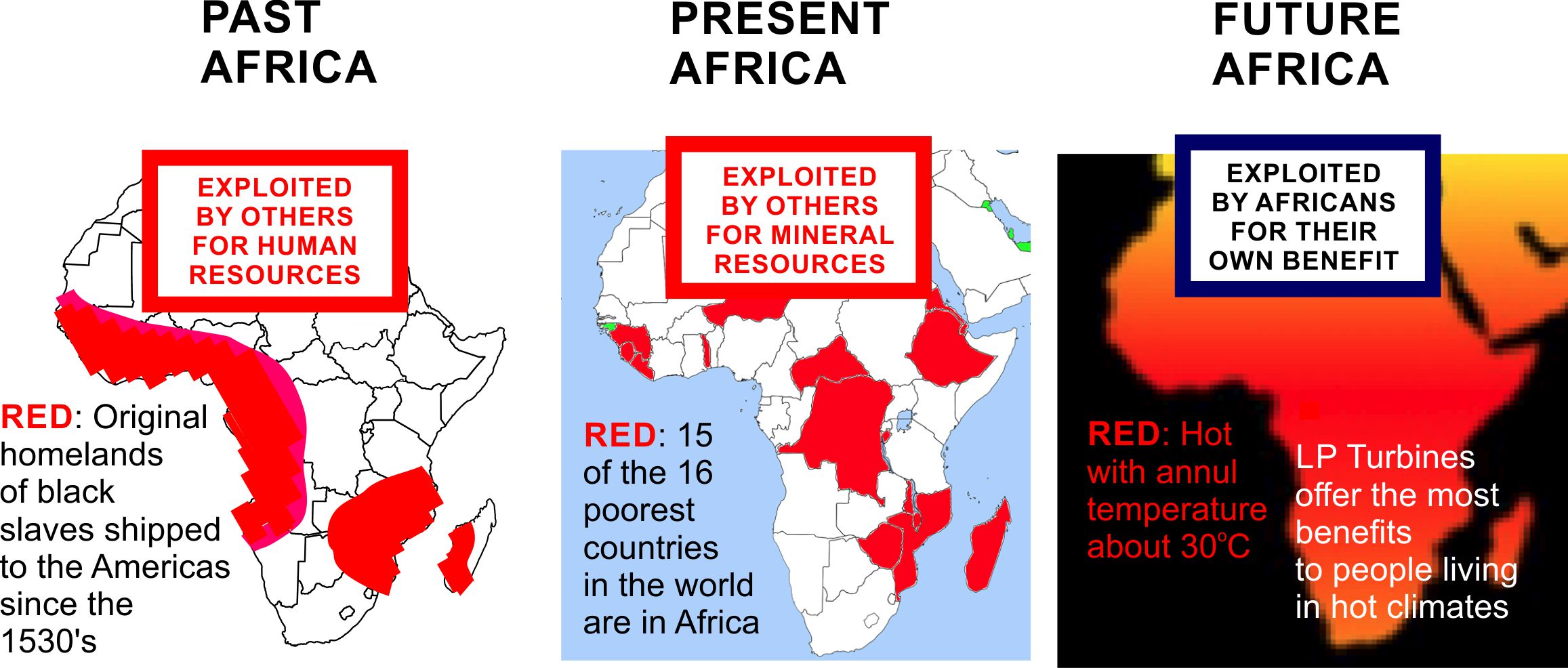
Figure 19. Africa in the past and present is a multi-racial human greed story, which flatters none of the ethnic groups involved. During the slave triangle era, some black Africans were willing to hand over their fellow Africans to European merchants in return for manufactured goods including textiles, alcohol and guns. At the present time, the majority of black Africans have remained poor while a few have become rich on corruption and commerce related to the continent’s mineral and other resources.
This could change in the future; with the continent building a new prosperity for itself based on African heat. As we have argued above, LP Turbines will give all of the tropical countries of the world a marginal economic advantage over cooler countries to the north of the tropics. But as shown in Figure 1, these cooler countries will also be able to generate all of the electricity they need, plus a modest amount to spare. So Africa has no fears about being plundered for its heat.
Sometime in the second half of this century, there is a very strong possibility that the mean level of prosperity in African countries will be comparable with that in other non-African countries across the globe.
The United Nations predicts that by 2050, 25% of the world population will be living in Africa, with 7% living in Europe and 13% living in the whole of the Americas, where Africans were taken as slaves. So, in the second half of our century, the economic power of Africa could exceed that of all the countries that benefited from African resources over the last four centuries.
When it comes to earning status in the eyes of others, nothing speaks louder than money. And the Africans will have it.
12 A new cryptocurrency to work in harmony with LP Turbines to fight inequality
This is a first draft proposal that will require refinement by others
Background
In principle, digital currencies can help developing countries to climb out of poverty.
They reduce transaction costs for international traders, and in an ideal world, they would be more stable than weak national currencies.
Existing digital currencies such as Bitcoin favour the rich who can cope with their volatility and can afford to mine them. They also favour the criminal classes because of the anonymity that they provide.
However, in a Latent Power Turbine era, mining and other energy consumption costs will fall dramatically. Likewise, the additional costs of adding traceability features will also fall.
These reduced costs provide an opportunity for a new trustworthy digital currency to enter the market.
We propose a new digital currency, having the following main aims:
- To provide poorer countries with the trading benefits of a stable digital currency.
- To create a traceable digital currency that is unattractive to criminals.
- To generate funding for United Nations humanitarian projects.
As a quirky bonus, the new currency will hopefully draw attention to the risks of human activity polluting the Moon and other solar system bodies.
For the purposes of this article, the currency will be named ALP, standing for All Living, or All Loving People, whichever is preferred.
Two features will distinguish ALP from existing cryptocurrencies.
1 ‘Anonymous’ registered users
All ALP traders will have to register with a central authority who will issue them with a personal identity code. In principle, this is stored in the blockchain when a transaction is recorded. However, in reality, in order to maintain commercial secrecy, only an alias will be stored. The central authority will (optionally) generate a fresh alias for each transaction, with only the central authority and warranted law officers knowing the true identity of the trader. This tractability will discourage ALP from being used for large scale money laundering, paying ransom money and other illegal activities.
2 The ALP will be a ‘United Nations digital currency’
The rate at which new ALP tokens are introduced into the market will be under the control of a chartered agency linked to the United Nations.
Generating funds for UN humanitarian projects
This involces the quirky bit.
We will adopt the modern practice of converting valuable items of art into liquid assets by selling digital shares in them. However, in our case, the objects of great value will be celestial bodies and ‘Guardianship’ with replace ‘Ownership’.
The central authority will start by establishing Guardianship for the Moon and then move on to guarding other celestial bodies, if additional traceable digital currencies are required for different trading purposes.
Aspiring guardians would pay in a bundle of fiat currencies, for the privilege of their title of ‘Guardian of the Moon’ and would be awarded (say) 1 ALP for each square millimetre of lunar land they agree to guard. [This creates 38 x 1018 ALPs for the total surface area of the moon.]
Guardianship is essentially a symbolic commitment; with many guardians spending no more time on guarding the moon than Knights of the Garter spend their days returning garters to their rightful owners.
Guardianships could be sold by sealed-bid auction, with each bid being submitted in (say) a bundle of three fiat currencies.
Details of Guardianship would be displayed on a dedicated website and could be exploited to make a public statement about the Guardians environmental credentials. [Yes, this could become the cosmic equivalent of ‘green washing’, but it will also draw attention to the human pollution of space.]

Figure 20. This is a mock-up of a Lunar Guardianship website display.
According to the Outer Space Treaty of 1967, the use of space has to be carried out in the interests of all countries. So approval for the principle of guardianship of the moon would require the overwhelming support of the members of the United Nations.
This should be forthcoming because selling guardianships will raise funds for UN humanitarian work.
The International Monetary Fund (IMF) or World Bank could oversee the selling of Guardianships on behalf of the UN. But, the UN, the IMF and the World Bank would be barred from bidding for new ALPs in order to avoid any accusations of currency manipulation.
It is hoped that some ‘Guardians of the Moon’ will take their title seriously, providing a cohort of champions who speak up for space conservation, before we start seriously exploiting the mineral resources of the moon, Mars and asteroids.
Selling ‘Guardianships of the Moon’ may seem like an unnecessary embellishment for a digital currency but it plays two key roles.
(i) It establishes the new currency as a finite resource that cannot be devalued simply by issuing ever more ALP trading tokens in response to political pressure.
(ii) The link between ALP tokens and the Moon will provides a tangible concept that some people will find more reassuring than abstract concepts such as blockchains.
In order to make the purchase of new Alp currency by auction more attractive than purchasing on the open market, some sort of financial incentive would be required. For example, additional ALP tokens could be given to the successful auction winner, with the size of the bonus being proportional to the total number and value of all the bids made.
Reducing cybercrime
The long term aim is that traceable cryptocurrencies will discourage a range of financial crimes including blackmail and financial corruption..
The electronic records of the movement of ALPs between traders will help law enforcement agents to spot suspicious activities such as money laundering and the creaming off of public funds.
